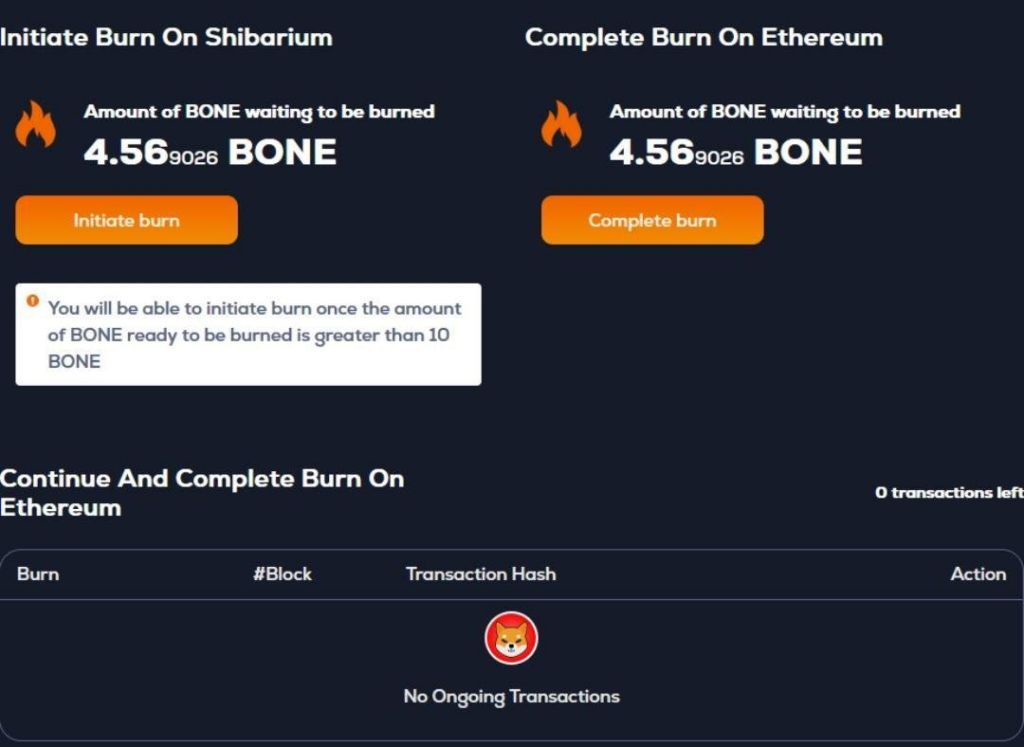The Shiba Inu (SHIB) community is abuzz with excitement following the leak of the SHIB burn portal on Shibarium, the upcoming layer-2 network within the ecosystem.
The leak, shared by the pseudonymous Twitter user “SHIB INFORMER,” revealed a preview of the burn mechanism’s user interface, providing the Shib army with a sneak peek into what lies ahead.
According to the leaked information, the burn portal on Shibarium will enable users to swap accumulated BONE tokens for Shiba Inu (SHIB) tokens, which will subsequently be sent to the burn address.

This aligns with the original concept of charging transaction fees in BONE tokens. Notably, these fees will be accumulated until they reach a specific threshold, at which point any user will have the ability to initiate the burn transaction.
“The transaction fees destined to burn will be accumulated up to a certain amount, and then the Burn will be triggered. My current understanding is that anyone will be able to trigger it after the threshold is reached,” tweeted SHIB INFORMER while sharing the accompanying image.
It is important to note that the burn process will be manual, relying on users to trigger the burn transaction once the accumulated threshold is met. As the leaked interface is still in the alpha testing stage, it is likely that changes may occur before the public beta phase.
The primary objective of the burning mechanism is to support the burning campaign of SHIB tokens. As outlined in the documentation by the Shiba Inu team, Shibarium plans to burn 70% of its base transaction fees in SHIB, while allocating the remaining 30% for network maintenance.
This approach is expected to have a significant impact on the token’s supply, potentially boosting SHIB’s value toward the desired price point of $0.001.



